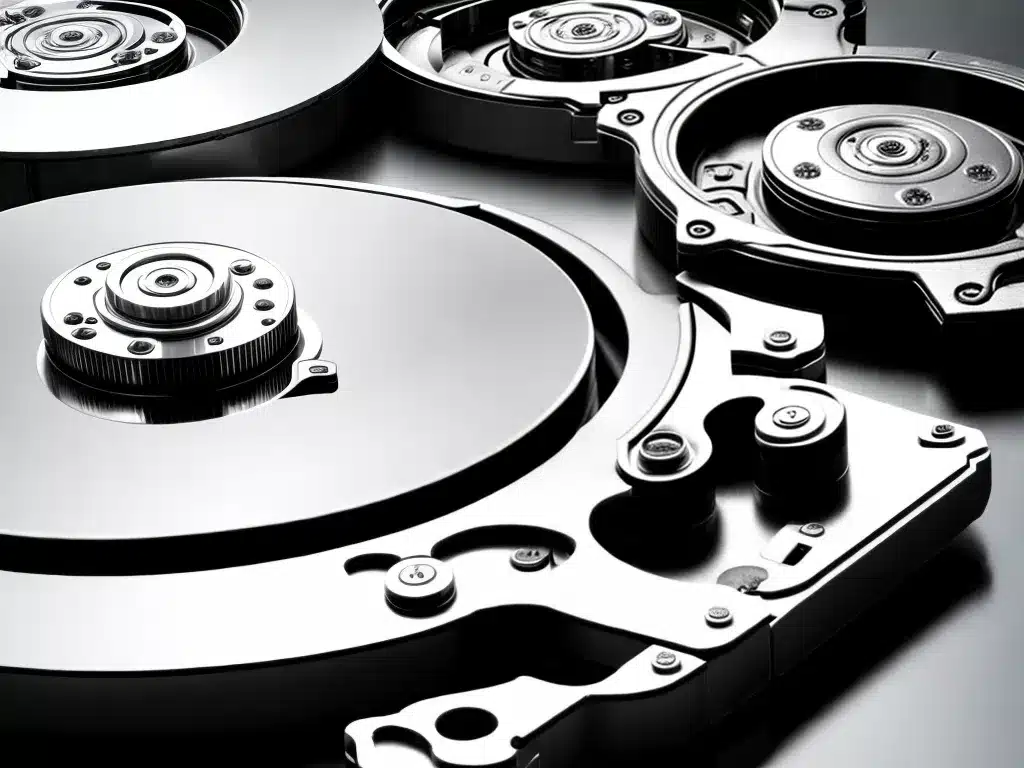
Introduction
As computers and devices get older, their hard drives can start to fail. This can be frightening if you have important files stored on the drive that you need to access. Recovering data from an old or dying hard drive is possible, but it takes some specific tools and techniques.
In this guide, I’ll walk you through everything you need to try to recover your valuable data from an aging hard drive. With the right approach, you can often recover most if not all of your files.
Back Up Important Data
Before doing anything else, it’s critical to back up your important files. If your hard drive is showing signs of failure, it could completely stop working at any time.
I recommend immediately backing up any crucial files you don’t want to risk losing. Copy them over to an external drive or cloud storage. This guarantees you have copies of key data in case the drive dies during your recovery attempt.
Signs Your Hard Drive Is Failing
Here are some common signs that your hard drive may be failing and nearing the end of its life:
- Strange noises coming from the drive, like grinding, buzzing or clicking
- Your computer freezing or crashing during normal operation
- Delayed file transfers and extremely slow performance
- Frequent warnings about bad sectors or data errors
- Failure to boot up properly or detected by your computer
If you notice any of these issues, it’s vital to recover your files as soon as possible before complete drive failure.
Recover Data Using Disk Utilities
The first recovery method to try is using built-in disk utilities.
Windows users can attempt recovery using the CHKDSK utility. Here are the steps:
- Type
chkdsk X: /finto the command prompt, whereXis the failing drive letter. - Let the scan run – this checks the drive for errors and attempts repair.
- When complete, restart your PC and see if the drive’s data is accessible.
On Mac computers, you can use First Aid in Disk Utility:
- Open Disk Utility and select the failing drive.
- Click “First Aid” and then “Run”. This scans and repairs errors.
- Afterwards, check if files can be accessed.
Many times disk utilities alone can recover data from a failing drive. But if the drive has severe corrupted files or physical damage, a more advanced recovery method is required.
Use Data Recovery Software
If drive utilities don’t work, the next step is to try dedicated data recovery software.
I recommend Stellar Data Recovery – it’s reliable, easy to use and supports many drive formats. Here is the basic process:
- Download and install the recovery software on a working computer.
- Connect the aging hard drive to the computer, either directly or with a USB enclosure.
- Open Stellar Data Recovery and select the failing drive to scan.
- Select types of files to recover, or scan the full drive.
- Save the recovered files to another healthy drive.
The software scans the drive and repairs corrupted files so they can be accessed again. This method can recover data even from severely damaged drives.
Send to a Data Recovery Service
For difficult drive failures, you may need to turn to a professional data recovery service. They have specialized equipment and cleanroom facilities to physically repair drives and pull data.
However, data recovery services tend to be expensive, often $500 or more. Use this option only if you absolutely need to recover irreplaceable data.
Search for reputable and affordable data recovery companies in your area if required. Ask about their success rates, costs, and turnaround time.
Prevent Drive Failure in the Future
Once you’ve recovered your valuable data, it’s time to think about avoiding drive failures down the road:
- Replace aging hard drives – regularly swap out old drives every 3-5 years.
- Monitor S.M.A.R.T. errors – this can predict failure before it happens.
- Keep drives cool – high temps can accelerate wear and tear.
- Handle laptops carefully – impacts can damage hard drives.
- Always keep backups – both local and cloud copies of important files.
Conclusion
Recovering lost data from a failing hard drive is stressful, but absolutely possible if you use the right techniques. First try built-in disk utilities, then turn to data recovery software or services for more serious issues. And most importantly, regularly back up your data to avoid reliance on recovery. Let me know if you have any other questions!












